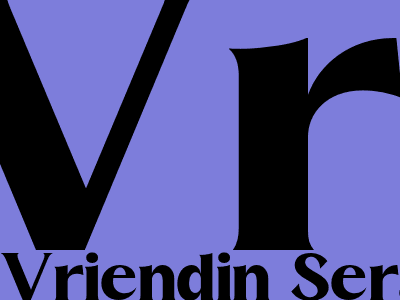**Vriendin Sera: The Ultimate Guide to Optimizing Your Blog for Search Engines**
**Introduction**
In today's digital landscape, having a strong online presence is crucial for businesses and individuals alike. A well-optimized blog can help you reach a wider audience, establish yourself as an expert in your field, and drive traffic to your website.
Vriendin Sera is a comprehensive guide that will teach you everything you need to know about optimizing your blog for search engines and increasing your visibility online.
**Chapter 1: The Basics of SEO**
Search engine optimization (SEO) is the process of improving your website or blog so that it appears higher in search engine results pages (SERPs). This is done by making changes to your site's content, structure, and code, so that it is more relevant to the keywords that people are searching for.
The first step to optimizing your blog for SEO is to understand how search engines work. Search engines use bots to crawl the web and index websites. These bots look for specific elements on your site, such as the title, headings, and body content, to determine what your site is about. They also look for backlinks from other websites to your site, as this is a sign that your site is credible and authoritative.
**Chapter 2: Keyword Research**
Keyword research is the process of identifying the keywords that people are searching for in relation to your topic. This information can be used to optimize your blog posts for those keywords, so that they are more likely to appear in search results.
There are a number of different ways to conduct keyword research. You can use Google AdWords Keyword Planner, or you can use a third-party tool like SEMrush or Moz.
**Chapter 3: On-Page Optimization**
On-page optimization refers to the changes you can make to your blog posts to make them more relevant to the keywords that people are searching for. This includes optimizing your title, headings, and body content, as well as adding images and videos.
Your title should be clear and concise, and it should include the keyword that you are targeting. Your headings should also include the keyword, and they should be used to break up your content into logical sections.
Your body content should be well-written and informative. It should include the keyword that you are targeting, but it should also be relevant to the topic of your blog post.
**Chapter 4: Off-Page Optimization**
Off-page optimization refers to the activities that you can do outside of your blog to improve your search engine rankings. This includes building backlinks from other websites to your site, as well as promoting your blog on social media.
Backlinks are one of the most important factors in search engine rankings. They are a sign to Google that other websites trust and value your content. The more backlinks you have, the higher your site will rank in search results.
Social media is a great way to promote your blog and attract new readers. When you share your blog posts on social media, you are making it easier for people to find your content and link back to your site.
**Chapter 5: Tracking and Measuring Your Results**
It is important to track and measure your SEO results so that you can see what is working and what is not. There are a number of different tools that you can use to track your website's traffic, including Google Analytics and Google Search Console.
Once you have collected some data, you can start to make changes to your SEO strategy to improve your results. This is an ongoing process, and it is important to stay up-to-date on the latest SEO trends.
**Conclusion**
Vriendin Sera is a comprehensive guide to optimizing your blog for search engines. By following the tips in this guide, you can improve your visibility online and reach a wider audience.

Comments